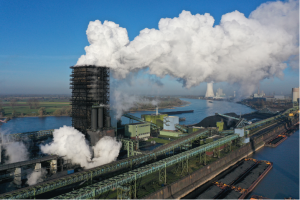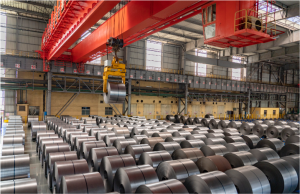When we talk about a material that is cheap, tough, durable, non-polluting, 100% recyclable and certified as one of the most sustainable in the world, we are likely to think of a natural product or a cutting-edge innovation. And yet, steel is a human invention that has been with us for almost 4,000 years, although stainless steel is just over a century old. In the search for materials with the lowest possible environmental impact, steel is almost unbeatable, except for one weakness: its CO2 emissions. For this reason, various strategies are pursuing green steel as the holy grail of sustainable materials.

Although we may not think of steel as a recyclable material because we don’t see recycling bins on the street to dispose of it, the truth is that consumers don’t recycle it because it is so durable. But steel is recovered from the components that contain it and is actually recycled at a higher rate than paper or glass: over 90%, with no loss of quality. And while we don’t meet all our needs with second-hand steel, that is because recycling can’t keep up with the relentless growth in demand, which has tripled since 1970 and is expected to increase by more than 33% by 2050.
The environmental costs of production
But while its highly industrialised nature offers a relatively affordable price, steel production is resource-hungry. It requires large quantities of raw materials extracted from mining, which is generally a highly polluting activity. Making one tonne of steel requires 28 tonnes of water, although 90% is now returned clean to the source. It also consumes huge amounts of energy: although it is now produced using less than half the energy per tonne of 35 years ago, it uses more than twice as much energy as the world’s cement production—the second most consumed material in the world after water—accounting for 8% of global energy demand.

The vast majority of this energy, 75%, comes from coal. This already points to steel’s biggest problem: it is responsible for 7% of global CO2 emissions, the main greenhouse gas causing climate change. The production of one tonne of steel emits between 1.8 and 2.91 tonnes of CO2.
This is not an easy problem to solve; although energy production is moving towards clean and renewable sources, steel depends on coal in three different ways. Firstly, iron is often found in nature in the form of oxidised ore. To extract the usable iron, it must be reduced (separated from oxygen, the reverse process of oxidation) using coke, coal distilled at 1,100 °C. The reaction of coke with iron ore in a blast furnace, in the presence of oxygen, produces iron and CO2. Secondly, the coal also provides the carbon that alloys with the iron to produce steel. Finally, coal is used as a fuel in these processes.
Pathways to recycled steel
Recycling is the simplest way to reduce these emissions: according to the International Energy Agency (IEA), the production of recycled steel reduces the amount of energy required to one eighth, but most of this is electricity rather than coal. Recycling takes place in electric arc furnaces that melt the metal, but today this only accounts for 30% of steel production.

A second, more complex route is to capture the CO2 generated and use it as a source of carbon in the alloy. According to energy physics expert Stephen Carr of the University of South Wales, the problem with carbon captured in other industrial processes is that, in the case of steel, the CO2 is emitted mixed with other gases. This type of low-CO2 steel is still at the research and demonstration stage, but projects such as the European C4U project at University College London are applying emerging technologies that aim to capture up to 94% of the CO2 emitted.
A further step is to do away with the coke used to reduce the ore, and there are two ways of doing this. The first is to use hydrogen, especially so-called green hydrogen, produced by the electrolysis of water using renewable energy, or at least blue hydrogen, in which CO2 is emitted due to the use of natural gas, but is captured. Today less than 5% of steel is produced in this way, which could be boosted by bringing green hydrogen production closer to steelmaking plants. The second possibility is to reduce the ore directly by electrolysis, an option that Carr says is still “a long way from being commercially viable.” In either case, steelmaking in an electric arc furnace, also powered by clean energy, would be the green steel ideal.

The push for green steel includes pioneering projects such as Sweden’s HYBRIT and H2 Green Steel, and involves major producers such as Luxembourg-based giant ArcelorMittal, the world’s second-largest producer, which is preparing in Spain what will be “the world’s first full-scale zero-carbon emissions steel plant.” Fortunately, and although Carr says coal will be around for decades to come, the IEA’s roadmap for decarbonising steel in line with the 2015 Paris Agreement climate targets gives some leeway: by 2050, emissions must be cut by more than half. “Coal use in steelmaking does not need to cease immediately, but guaranteeing that the future of steelmaking will be low-carbon requires action now,” concludes Carr.
Comments on this publication